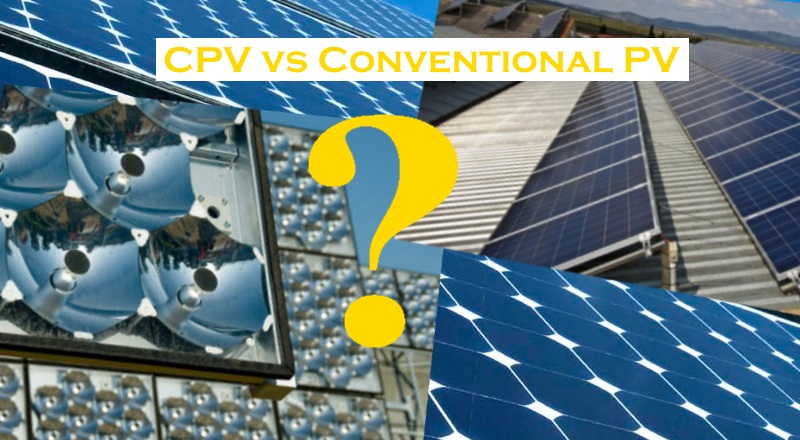Sweet Answer from Solar Mango: (updated Jul 2015)
Concentrating photovoltaic (CPV) is an emerging technology in which, through the use of lenses that concentrate sunlight on the solar cells, high panel efficiency is obtained. In conventional PV technology, normal amounts of sunlight available at a location falls on the solar panel and gets converted to electricity. In CPV, because the sunlight is concentrated, the amount of sunlight falling per unit area of the solar panels is much higher. This results in much higher efficiency for a concentrating solar power plant, compared to that for conventional solar power plants.
(To visualize concentrating sunlight, recall the simple lens experiments you would have done in your school days. If you get a lens to focus sunlight on a piece of paper, you will see the paper catch fire after a brief while. This is owing to the phenomenon of concentrating sunlight which heats up the paper to high temperatures, resulting in the paper catching fire).
A CPV system with a high efficiency generates higher amounts of electricity than conventional panels, for the same area. Such a scenario is obviously attractive for rooftop owners, as with their limited area they now have the opportunity to generate extra electricity.
While CPV provides the benefit of higher electricity output for the same area, the overall business case for CPV is still not very clear as of mid 2015.
Why is this so?
For one, CPV systems are far more expensive than conventional solar power plants. As a result, the cost per kWh of solar power is higher for a CPV power plant than it is for a conventional solar PV power plant. That is, while it generates more electricity for the same rooftop area, it costs much more today to generate a unit of electricity from a CPV power plant than from a conventional rooftop solar power plant.
Secondly, CPV power plants require maintenance because in many cases they involve trackers that turns the solar panels constantly towards the sun, and trackers have moving parts requiring maintenance. In addition, CPV power plants can get heated to high temperatures owing to the concentration of sunlight (remember the paper catching fire!), once again implying extra maintenance.
CPV faces other challenges around the following:
- Water required for cooling the panels as they get quite hot.
- Speed at which a CPV plant can be built compared to that of PV
- Uncertainties among emerging CPV technologies, compared to PV’s proven history.
These factors currently make investors opt for conventional PV system over CPV.
Based on an analysis of the pros and cons of CPV, Solar Mango opines that CPV has not yet arrived on the solar stage yet. But watch out, with rapid technological advances, it might not be long before CPV provides superior economics to conventional solar panels.
Related Articles
- As a rooftop solar owner, what should I do to maximise output and returns?
- Concentrating Photovoltaics – Getting More Power from the Same Area
- Concentrating Photovoltaics – Definition from Solar Dictionary
Ask Solar Mango
Have a solar energy related question to be answered at Solar Mango? Send it to ask@solarmango.com

 Skip to content
Skip to content
